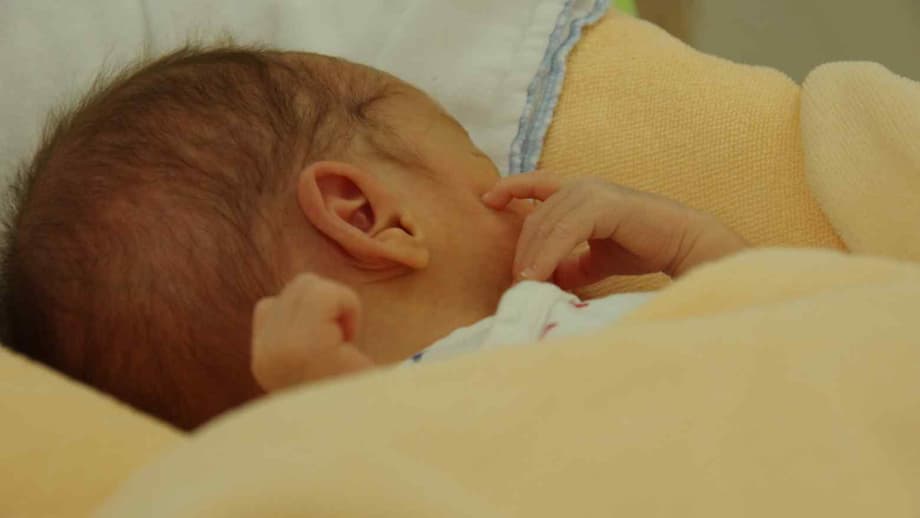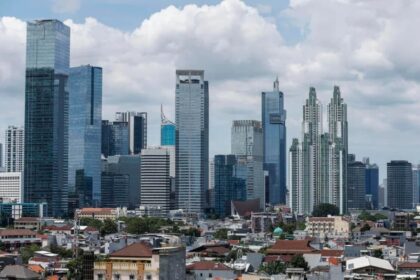Record surge in births to foreign parents
Japan recorded a milestone in 2024 that points to a quiet demographic shift. Babies born to foreign national parents reached 22,878, crossing the 20,000 mark and representing about 3.2 percent of all newborns delivered in the country last year. Both the number and the share of these births are at historic highs. The increase reflects a larger influx of younger foreign residents and a gradual change in family formation patterns in communities where foreign workers have put down roots. While the overall number is still modest in a nation of more than 120 million people, the trend is important because it adds new families at a time when births to Japanese parents continue to fall.
The wider backdrop is a deepening birth slump among Japanese nationals. Births to Japanese parents dropped to about 686,000 in 2024, down by around 41,000 from the year before, the first time since 1899 that the figure has stayed below 700,000 on the official tally. The total fertility rate fell to a record low of 1.15, continuing a nine year slide. Japan’s official birth and fertility statistics exclude foreign nationals born in Japan, which is why the headline milestone of fewer than 700,000 births does not include the foreign share. If newborns of foreign parents are combined with the official count for Japanese parents, total babies born in Japan would still be around 709,000. Deaths were near 1.6 million, so the natural decrease, deaths minus births, reached roughly 919,000 people. The new foreign born cohort cannot reverse that arithmetic, yet it is helping to slow the pace at the margins and invigorating specific communities.
What stands out is the gap between national totals and local experience. In parts of Tokyo and industrial towns across the country, the share of babies born to foreign families is much higher than the national average, and local schools, clinics, and city halls are already adapting. Those adjustments, and whether foreign families can stay and thrive, will shape the real effect of this new demographic thread.
Why the numbers are moving
Several forces are intersecting. Japan’s rapid aging, persistent labor shortages, and years of tight budgets at home have drawn more foreign workers and students. The number of legal foreign residents has climbed to almost 4 million, according to immigration authorities, with a large share in their 20s and 30s. Many of these residents work in healthcare, manufacturing, logistics, hospitality, and construction. Several visa routes have expanded, including programs for specified skilled workers and pathways for highly skilled professionals. The government is replacing the long criticized Technical Intern Training Program with a new framework that allows better training and more mobility, and it is extending stays for workers in sectors with chronic shortages. These steps have increased the chances that foreign residents settle longer and start families.
At the same time, the structural reasons behind Japan’s low fertility endure. Marriage remains closely linked to childbearing in Japan, and the number of marriages has trended down for decades. The figure edged up to about 485,000 in 2024, yet that recovery was modest. Housing costs, long work hours, tight household budgets, and concerns about childcare continue to discourage earlier marriage and larger families. Gender norms still place heavy expectations on mothers, and career penalties for women who step back from work are common. These pressures leave many would be parents uneasy about having more than one child, or any children at all.
How births are counted and who is included
Japan’s headline birth and fertility figures come from the Ministry of Health, Labour and Welfare and exclude foreign nationals born in Japan. That is why the official 2024 count of about 686,000 births marks a record low and sets a grim tone, even though there were more than 22,000 babies born to foreign parents on top of that. The fertility rate, which measures the average number of children a woman is expected to have over her lifetime, is also calculated using the Japanese national population and excludes foreign nationals. This accounting is standard in official releases but can cause confusion when people see different totals reported elsewhere.
Another nuance is classification. A baby is logged as a foreign national in these statistics when both parents are foreign nationals, or when the mother is an unmarried foreign national. Babies born to couples with one Japanese parent and one foreign parent are counted as Japanese births. In other words, the true number of children with at least one foreign parent is higher than the foreign national birth figure suggests.
Where foreign newborns are concentrated
Foreign parents are not evenly distributed across Japan. Academic research shows that the number of live births to migrant mothers has grown for three decades and that the distribution has become more uneven across regions. A study using prefecture level data found greater areal inequality, with births to migrant mothers increasingly concentrated in specific prefectures and cities. This concentration has accelerated over the last decade, which mirrors the geography of jobs, language networks, and community ties.
The picture on the ground reflects that trend. In central Tokyo’s 23 wards, some areas now see foreign family births in double digits as a share of local newborns. Ota Ward has recorded rates above 10 percent. Just north of the capital, the city of Warabi in Saitama Prefecture reported that 21.8 percent of its newborns were to foreign parents. Several towns in Chiba and Aichi Prefectures have notable shares as well. The absolute numbers within each city are still relatively small in many cases, often on the order of a few hundred babies per year, yet the share matters for how schools and clinics plan services. The headline ratios also understate the level of internationalization because children of mixed Japanese and foreign parentage are counted as Japanese in official tallies.
Local governments are responding. In Nishio, Aichi Prefecture, foreign residents from dozens of countries now account for a large slice of births, and the city employs interpreters in Portuguese and Vietnamese to help families navigate daycare and health visits. In Narita, Chiba Prefecture, authorities distribute multilingual guides on local services and customs, and the city reports a sharp rise in foreign family births since 2020. These steps aim to reduce isolation for new parents and to improve communication between families and public services.
Which communities are growing
The composition of foreign parents points to broader migration patterns. Chinese mothers accounted for about 4,200 births in 2024, followed by mothers from the Philippines with roughly 1,800 and from Brazil with about 1,350. A large group falls under other nationality, which includes countries such as Nepal and Vietnam. These ties often reflect work opportunities and existing communities. Care facilities and factories employ many Vietnamese and Nepalese workers. Brazilian families are well established in parts of Aichi, Shizuoka, and Gunma. The variety of origins and languages is expanding across metropolitan areas and in select regional hubs.
What this means for schools, clinics and city halls
The rise in foreign family births brings practical challenges and opportunities. Obstetrics and pediatric units in high concentration areas need interpreters, cultural mediators, and staff trained in different norms of prenatal and postnatal care. Municipal offices must ensure that birth registration, health checkups, and child allowance applications are accessible in multiple languages. Public health messaging, from vaccination schedules to emergency alerts, needs to reach parents who may not yet read Japanese fluently. When these supports exist, families can integrate more smoothly, and children are more likely to enter kindergarten and elementary school ready to learn.
Researchers who track these trends caution that concentration will likely strengthen in certain prefectures and cities. Planning for that reality includes allocating budget for translation, providing clear pathways for foreign qualified nurses and midwives to contribute, and helping private clinics adapt. Regional coordination is also useful. City halls in the same labor market can share resources for language services and parent education.
Policy experts argue that support must extend beyond childbirth. Language instruction for parents and toddlers, access to after school programs, and fair access to work all influence whether families put down permanent roots. They warn that ad hoc assistance often leaves gaps, and that consistency across prefectures helps avoid a patchwork of outcomes.
One such voice is Toshihiro Menju, a visiting professor at Kansai University of International Studies who has studied integration policy and migration for decades. He has urged local and national authorities to treat education, language, and fair pay for foreign residents as core parts of demographic strategy, not side issues.
Without steady support for foreign families, including language, schooling, and equal opportunity at work, Japan risks developing a divided society where many newcomers are present but remain on the margins
Politics and public mood
The surge in foreign residents and the rising number of foreign family births have moved immigration higher on the political agenda. Campaigns in recent elections featured calls for tighter controls on foreign workers alongside proposals to expand housing and childcare for all families. Populist groups have gained traction in some areas by warning of social strain. Others argue that Japan’s labor market and pension system cannot cope without more newcomers. Public concerns also include crowded tourist districts and pressure on urban infrastructure, issues that politicians often link to broader debates on migration and community life.
Officials at the Justice Ministry have signaled that the share of foreign residents could surpass 10 percent by 2040 if current trends continue. That would be a major shift for a country that, until recently, saw relatively small inflows from abroad. Any rise in permanent settlement would place a premium on language access, anti discrimination measures, and pathways to long term residency so families can plan their futures with confidence.
National leaders frame the demographic challenge in stark terms. Prime Minister Shigeru Ishiba has described the situation as a quiet emergency and has pledged expanded child allowances, free high school education, and stronger income support during parental leave for couples who take leave at the same time.
We face a quiet emergency, and we must make it possible for people to raise children with confidence, from childcare costs to stable work and time at home
Can foreign families change the trend
The arithmetic shows both promise and limits. The 22,878 babies born to foreign parents in 2024 offset more than half of the one year drop in births to Japanese parents. That contribution matters for local schools and clinics, and it provides a base for communities that have seen young residents leave. At the national level, however, deaths still outnumber births by a wide margin, and the fertility rate of 1.15 is far below the level needed to keep the population stable. Even if foreign residents continue to grow and more families settle, the population will keep shrinking without a broad turnaround in childbearing among residents of all backgrounds.
Projecting to mid century helps focus priorities. If foreign residents reach or exceed 10 percent of the population by 2040, the number of children born to foreign parents will likely rise further. The impact on the workforce will depend on whether those children grow up with strong language skills, equal access to quality education, and clear routes into vocational and university programs. Policies that reduce the barriers to family life, from affordable childcare to shorter work hours and fair pay, would benefit all parents and would influence whether foreign families choose to stay.
Citizenship and residency rules also shape outcomes. Japan does not grant citizenship by birth on its soil. Children born in Japan to non Japanese parents do not automatically become citizens, though naturalization is possible later. Applicants typically need long term residence, financial stability, Japanese language ability, and they must give up other citizenships. These rules, along with language hurdles in schools and workplaces, can slow integration. Government moves to replace older training schemes with more stable pathways to residency and to standardize protection for workers could support family formation by reducing uncertainty.
Japan is not alone in facing a new era of low fertility. The United States now has a fertility rate around 1.6. Chile has fallen near one child per woman. Many economies are grappling with later marriage, the cost of living, and changing expectations about work and family. Japan stands out for the speed of its shift and the age structure it already has. Projections suggest the population could fall to about 87 million by 2070, with roughly 40 percent of people age 65 or older. In that context, every addition to the base of young families matters, and the rising presence of foreign parents is one of the clearest bright spots.
Key Points
- Babies born to foreign national parents reached 22,878 in 2024, about 3.2 percent of all newborns in Japan
- Births to Japanese parents fell to about 686,000 in 2024 and the fertility rate hit 1.15
- Official birth and fertility statistics exclude foreign nationals born in Japan
- Deaths were near 1.6 million in 2024, leaving a natural decrease of about 919,000 people
- Foreign residents have grown to almost 4 million, many in their 20s and 30s
- Foreign family births are concentrated in specific areas, including parts of Tokyo and cities like Warabi
- Top maternal nationalities include China, the Philippines, and Brazil, with growing communities from Vietnam and Nepal
- Local governments are adding language and childcare support, but services remain uneven
- Justice Ministry officials say foreign residents could exceed 10 percent of the population by 2040
- Rising foreign family births help ease the decline, yet they do not reverse the nationwide population drop












